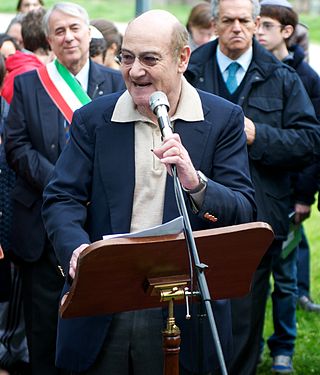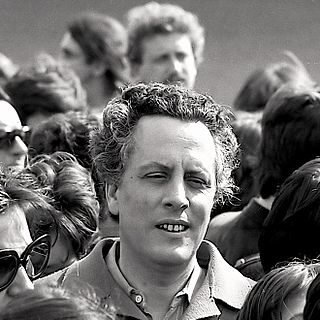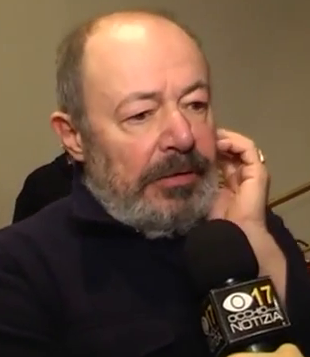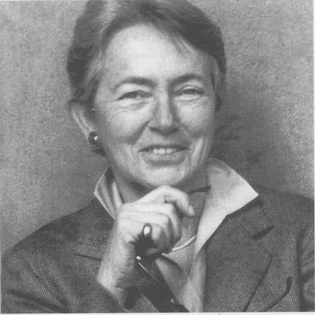This article has an unclear citation style .(October 2015) |

Antonio Perazzi (born 26 January 1969) is an Italian garden designer, landscape architect, botanist, writer and journalist. He is an expert in naturalistic and ecological garden.
This article has an unclear citation style .(October 2015) |

Antonio Perazzi (born 26 January 1969) is an Italian garden designer, landscape architect, botanist, writer and journalist. He is an expert in naturalistic and ecological garden.
Antonio Perazzi specialized in garden and landscape architecture at Politecnico di Milano and at Royal Botanic Gardens, Kew in London. In 1998 he opened his studio and he signed projects as well as having offered advice to architectural and engineering companies, collaborating with Michele de Lucchi, Ettore Sottsass, Antonio Citterio, Franco Zagari, Park Associati, OBR, Tekne S.p.A., Cecchi & Lima Architetti Associati. [1]
He was involved in public and private projects in Italy and abroad, among all: the two public parks of Via Brisa e Via Ovada in Milan, [2] Triennale di Milano roof garden, [3] [4] [5] Amagioia garden [6] at Palazzo Varignana, part of the circuit Grandi Giardini Italiani, public spaces of Kaylan Mart mall, in Jaipur, India, landscape advice for Turin–Lyon high-speed railway. He has been invited to international exhibitions: Venice Biennale of Architecture, Festival international des jardins de Chaumont-sur-Loire, Avant gardeners exhibition at Tate Gallery, London, Féstival International des Jardins de Métis, [7] at Redford garden, Grand-Métis, Quebec, Canada. [1] [8] [9] [10] [11]
He was adjunct professor at Politecnico di Milano and held lectures and workshops in Italian and foreign faculties [1] [11] such as: Brera Academy, Politecnico di Milano, Universität der Künste Berlin, Istituto Superiore per le Industrie Artistiche (ISIA) of Urbino, Universität für angewandte Kunst Wien, Yunnan University of Finance & Economics, École nationale supérieure du paysage de Versailles.
Perazzi collaborates with national and international magazines. He published "Contro il Giardino" with Pia Pera for Ponte alle Grazie [12] and "Foraverde" for Maestri di Giardino, with a preface of Gilles Clément; He monthly signs "Bustine di paesaggio" a column on the magazine Gardenia. [1] [11] [13] [14] [15] [16] [17] [18] [19]
In 2009 he was selected as one of the world's most talented designers of public and private spaces in the book "Avant Gardeners: 50 Visionaries of the Contemporary Landscape". [21] In 2001, he was selected for the first Martini Prize for Landscape architecture, Villa Oliva-Buonvisi, San Pancrazio, Lucca, with the project "Il giardino del giardiniere". [20]
Antonio Perazzi collaborates with national and international magazines. He published Contro il Giardino with Pia Pera for Ponte alle Grazie [12] and "Foraverde" for Maestri di Giardino, [19] [22] with a preface by Gilles Clément; He monthly signs "Bustine di paesaggio" a column on the magazine Gardenia , Cairo Communication. [1] [13] [14]

The Polytechnic University of Milan is an Italian university located in Milan. It is the largest technical university in the country, with about 40,000 enrolled students. The university offers undergraduate, graduate, and higher education courses in engineering, architecture and design.

Achille Castiglioni was an Italian architect and designer of furniture, lighting, radiograms and other objects. As a professor of design, he advised his students "If you are not curious, forget it. If you are not interested in others, what they do and how they act, then being a designer is not the right job for you."

Marco Zanuso was an Italian modernist architect and designer.

Franco Albini was an Italian Neo-Rationalist architect, designer and university instructor in design.
Marco Piva, Italian architect, interior designer and product designer, born on February 15, 1952, in Milan.
Alberto Meda is an Italian engineer and designer. His work is held in museums around the world. He works and lives in Milan.

Gabriele Nissim is an Italian journalist, historian and essayist whose works discuss Eastern Europe.

Antonio Porta was an Italian author and poet and one of the founders of the Italian literary movement Gruppo 63.

The Triennale di Milano is a museum of art and design in the Parco Sempione in Milan, in Lombardy in northern Italy. It is housed in the Palazzo dell'Arte, built between 1931 and 1933 to designs by Giovanni Muzio and financed by Antonio Bernocchi and his brothers Andrea and Michele. The building houses a theatre, the Teatro dell'Arte, which was also designed by Muzio.

Bovisa is a district (quartiere) of Milan, Italy, located north of the city center, in the Zone 9. The name is supposedly derived from the Italian word bove, meaning ox, as the area developed from an ancient rural settlement.
In the year 2000, Paolo Brescia and Tommaso Principi established the collective OBR to investigate new ways of contemporary living, creating a design network among Milan, London and New York. After working with Renzo Piano, Paolo and Tommaso have oriented the research of OBR towards the integration artifice-nature, to create sensitive architecture in perpetual change, stimulating the interaction between man and environment.
Paolo Brescia is an Italian architect and founder of OBR Open Building Research.
Giovanni Battista Ciolina was an Italian neo-impressionist and divisionist painter.
Carlo Balestrini was an Italian painter. His best-known works are Impressionist landscapes with animals, especially horses.
Angelo Torricelli is an Italian architect.

Italo Rota was an Italian architect.

Franca Helg was an Italian designer and architect. She also had a career teaching at Istituto Universitario Architettura Venezia and Polytechnic of Milan. She collaborated with Franco Albini from 1945 through 1977.
Pia Pera was an Italian novelist, essayist, and translator.
Michele de Lucchi is an Italian architect and designer.

Rosario Assunto was an Italian philosopher, he was an Art theorist and landscape aesthetician.